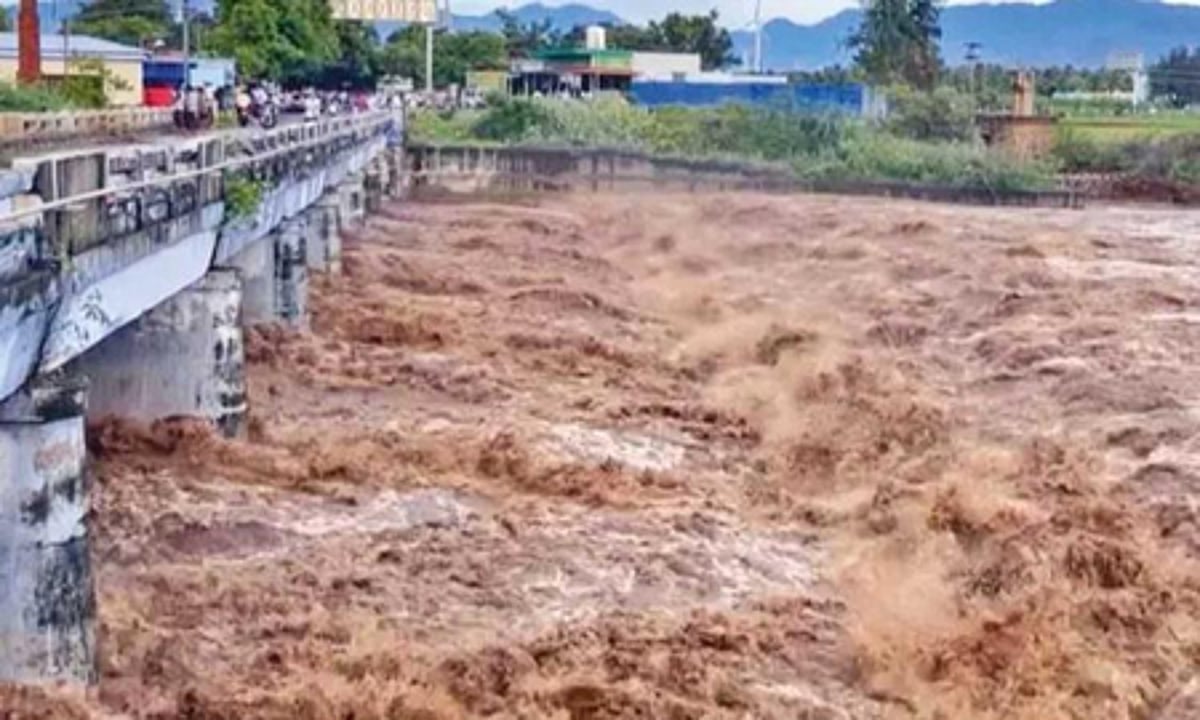Flood Alert Issued as Vaigai Dam Levels Rise in Tamil Nadu
Recent heavy rainfall has led to a significant increase in the water level of the Vaigai dam, prompting authorities to issue a flood alert for several districts in Tamil Nadu. As of Saturday evening, the water level reached 66 feet, a notable rise of five feet within just 24 hours. This situation has raised concerns for residents living near the riverbanks.
Rising Water Levels and Inflows
The surge in water levels is primarily due to substantial inflows from the Vaigai, Suruli, and Kottakudi rivers, which have experienced heavy rainfall in Theni district and surrounding hilly areas. Official reports indicate that the dam’s inflow escalated dramatically, increasing from 2,268 cubic feet per second (cusecs) at 6 AM to nearly 24,000 cusecs by 11 AM on Sunday. This tenfold increase necessitated immediate precautionary measures for those living downstream.
Precautionary Measures and Alerts
In response to the rising water levels, the Public Works Department (PWD) and local district administrations have begun alerting residents in low-lying areas. They are advising individuals living along the riverbanks to remain vigilant and prepare for possible evacuations if the situation worsens. Authorities have outlined a tiered alert system: a second-stage flood alert will be issued when the water level reaches 68.5 feet, followed by a final alert at 69 feet, at which point excess water will be released into the Vaigai River to prevent overflow.
Impact on Agriculture
While the flood alert has caused concern among residents downstream, it has brought some relief to farmers in the affected districts. The anticipated full capacity of the dam early in the northeast monsoon season is expected to provide a reliable water supply for irrigation, particularly benefiting the samba paddy crop. However, officials have warned that continued heavy rainfall could necessitate sudden releases of water from the dam, potentially leading to temporary flooding in nearby settlements.
Emergency Preparedness
Disaster response teams and local administrations are on high alert to manage any emergencies that may arise from further increases in the dam’s water level. They are prepared to take swift action to ensure the safety of residents and mitigate any potential flooding.
FAQs
What is the current water level of the Vaigai dam?
As of Saturday evening, the water level of the Vaigai dam reached 66 feet, marking a five-foot increase in just 24 hours.
What areas are affected by the flood alert?
The flood alert affects residents living along the banks of the Vaigai River in Theni, Madurai, Dindigul, Sivaganga, and Ramanathapuram districts.
What should residents do in response to the flood alert?
Residents in low-lying areas and along riverbanks are advised to stay vigilant and prepare for possible evacuations if necessary, following guidance from local authorities.
Conclusion
The rising water levels at the Vaigai dam have prompted a first-stage flood alert for several Tamil Nadu districts. While this situation poses risks for residents downstream, it also offers agricultural benefits as the region prepares for the northeast monsoon. Authorities are closely monitoring the situation and are ready to implement emergency measures as needed.
The Vaigai dam, constructed in the 1950s, plays a crucial role in managing water resources for irrigation and drinking water supply in Tamil Nadu. Its strategic location and capacity to store monsoon rainwater make it vital for the agricultural economy of the region. The current rainfall patterns are part of the northeast monsoon season, which typically runs from October to December, significantly impacting the water levels in various reservoirs across the state.
Local meteorological departments are closely monitoring weather forecasts to assess the likelihood of further rainfall in the coming days. This information is critical for both residents and authorities as they prepare for potential flooding scenarios. The collaboration between meteorologists, local governments, and disaster management teams is essential to ensure that timely warnings and necessary precautions are communicated effectively to the public.
In addition to immediate safety concerns, the situation highlights the importance of long-term water management strategies in the region. As climate patterns continue to evolve, authorities may need to consider infrastructure improvements and community education programs to enhance resilience against flooding and ensure sustainable agricultural practices.
Also Read:
Low-Pressure System Near India Won’t Affect UAE Weather







